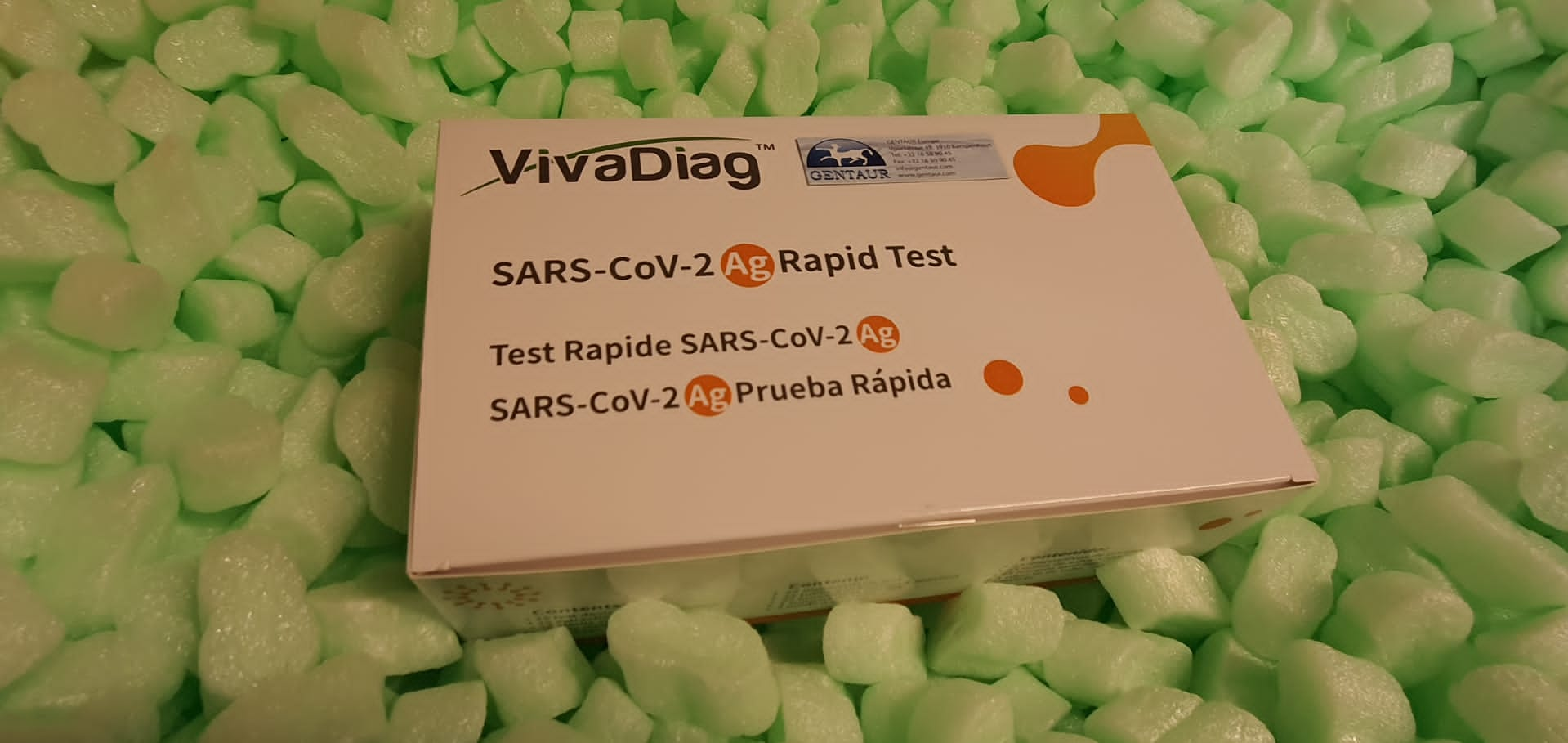Gliomas are the most typical central nervous system malignancies and current with vital morbidity and mortality. Treatment modalities are presently restricted to surgical resection, chemotherapy and radiotherapy. Increases in survival charge over the earlier a long time are negligible, additional pinpointing an unmet scientific want in this area. There is a continuous battle with the event of efficient glioma diagnostics and therapeutics, largely resulting from a mess of things, together with the presence of the blood-brain barrier and vital intertumoural and intratumoural heterogeneity.
Importantly, there’s a lack of dependable biomarkers for glioma, notably in aiding tumour subtyping and measuring response to therapy. There is a necessity for biomarkers that might each overcome the complexity of the illness and permit for a minimally invasive technique of detection and evaluation. This is a complete assessment evaluating the potential of present mobile, proteomic and molecular biomarker candidates for glioma. Significant hurdles confronted in glioma diagnostics and therapy are additionally mentioned right here. The Fused (Fu) kinase is a key transducer of Hedgehog signaling, however its related substrates have remained obscured because of the problem of acquiring lively Fu for in vitro kinase assay.
Based on the mechanism of Fu activation in vivo, we engineered a constitutively lively Fu and expressed it in Sf9 cells utilizing the baculovirus system. The kinase was affinity purified and utilized for in vitro kinase assay utilizing recombinant GST-fusion proteins as substrates to establish Fu-specific phosphorylation websites. For full particulars on the use and execution of this protocol, please check with Han et al. (2019).
How and When Does Outcrossing Occur in the Predominantly Selfing Species Medicago truncatula?
Empirical research on pure populations of Medicago truncatula revealed selfing charges increased than 80%, however by no means as much as 100%. Similarly, a number of research of predominantly selfing species present variability in the extent of residual outcrossing between populations and additionally between temporal samples of the identical inhabitants. However, these research measure international selfing charges on the scale of the inhabitants and we have no idea whether or not there may be intra-population variation and how outcrossing occasions are distributed, between genotypes, vegetation, flowers, or seeds.
Theoretical research predict the upkeep of residual outcrossing in extremely selfing species resulting from environmental (e.g., pollen biology) and/or genetic determinants and decompositions of the variation in outcrossing charge utilizing experimental information may be very informative to check these hypotheses. Here, we concentrate on one pure inhabitants of M. truncatula in order to explain exactly its mating system. In specific, we investigated the determinants of the selfing charge by testing for seasonal differences (environmental determinism) and variations between genotypes (genetic determinism).
We measured selfing charges in maternal progenies from vegetation collected broadly throughout a pure inhabitants. For every plant, we collected pods from flowers produced initially and on the finish of the flowering season to check for a seasonal variation in the outcrossing charge. For every collected offspring, we additionally estimated the chance that it was issued from a self-fertilization occasion and assessed the genetic part of variation of this mating system measure.
We discovered a big, albeit small, improve in outcrossing charge in progenies collected on the finish [t m = 0.137 (SD = 0.025)] in comparison with these collected initially [t m = 0.083 (0.016)] of the flowering season. A major between genotypes variation in selfing charge was additionally detected, ensuing in a heritability of 9% for the speed of residual outcrossing. Altogether, our work exhibits that regardless of a predominantly selfing reproductive mode, M. truncatula shows variation in residual outcrossing charge, and that this trait is probably going below a fancy determinism combining environmental and genetic elements. We talk about the evolutionary implications of our outcomes for the inhabitants.
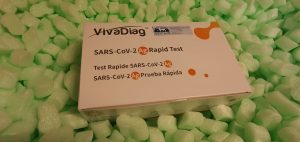
The intersect of genetics, surroundings, and microbiota in asthma-perspectives and challenges
In bronchial asthma, a good portion of the interplay between genetics and surroundings happens by way of microbiota. The proposed mechanisms behind this interplay are complicated and at occasions contradictory. This assessment covers latest developments in our understanding of this interplay: the “microbial speculation” and the “farm impact”; the position of endotoxin and genetic variation in sample recognition programs; the interplay with allergen publicity; the extra involvement of host intestine and airway microbiota; the position of viral respiratory infections in interplay with the 17q21 and CDHR3 genetic loci; and the significance of in utero and early-life timing of exposures.
We suggest a unified framework for understanding how all these phenomena work together to drive bronchial asthma pathogenesis. Finally, we level out some future challenges for continued analysis in this area, in specific the necessity for multiomic integration, in addition to the potential utility of bronchial asthma endotyping. We characterised fish eDNA compositions utilizing speedy, low-volume filtering with replicate and management samples scaled for a single Illumina MiSeq movement cell, utilizing the mitochondrial 12S ribosomal RNA locus for taxonomic profiling.
) EDTA - Dinatriumsalz - Dihydrat (Molecular Biology Grade) |
|
CE135 |
GeneOn |
250 g |
EUR 72 |
) EDTA - Dinatriumsalz - Dihydrat (Molecular Biology Grade) |
|
CE136 |
GeneOn |
500 g |
EUR 86.4 |
) EDTA - Dinatriumsalz - Dihydrat (Molecular Biology Grade) |
|
CE137 |
GeneOn |
1 kg |
EUR 124.8 |
) EDTA - Dinatriumsalz - Dihydrat (Molecular Biology Grade) |
|
CE138 |
GeneOn |
5 kg |
EUR 418.8 |
) Sodium chloride (Molecular Biology Grade) |
|
CE205 |
GeneOn |
500 g |
EUR 62.4 |
) Sodium chloride (Molecular Biology Grade) |
|
CE206 |
GeneOn |
1 kg |
EUR 70.8 |
) Sodium chloride (Molecular Biology Grade) |
|
CE207 |
GeneOn |
5 kg |
EUR 123.6 |
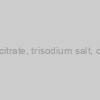 Sodium citrate, trisodium salt, dihydrate |
|
CB0035 |
Bio Basic |
500g |
EUR 73.78 |
|
|
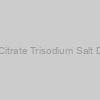 Sodium Citrate Trisodium Salt Dihydrate |
|
40300096-1 |
Glycomatrix |
1 kg |
EUR 53.63 |
 Sodium Citrate Trisodium Salt Dihydrate |
|
40300096-2 |
Glycomatrix |
2.5 kg |
EUR 71.93 |
 Sodium Citrate Trisodium Salt Dihydrate |
|
40300096-3 |
Glycomatrix |
500 g |
EUR 22.7 |
 Sodium Citrate Trisodium Salt Dihydrate |
|
40300096-4 |
Glycomatrix |
5 kg |
EUR 178.16 |
) XTT sodium salt (Molecular Biology Grade) |
|
CE250 |
GeneOn |
100 mg |
EUR 208.8 |
) XTT sodium salt (Molecular Biology Grade) |
|
CE251 |
GeneOn |
500 mg |
EUR 612 |
) NADP - sodium salt (Molecular Biology Grade) |
|
CE200 |
GeneOn |
250 mg |
EUR 92.4 |
) NADP - sodium salt (Molecular Biology Grade) |
|
CE201 |
GeneOn |
1 g |
EUR 190.8 |
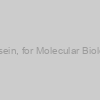 Casein, for Molecular Biology |
|
MB279-100G |
EWC Diagnostics |
1 unit |
EUR 110.77 |
|
Description: Casein, for Molecular Biology |
 Casein, for Molecular Biology |
|
MB279-500G |
EWC Diagnostics |
1 unit |
EUR 387.65 |
|
Description: Casein, for Molecular Biology |
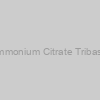 Ammonium Citrate Tribasic |
|
40100312-1 |
Glycomatrix |
100 g |
EUR 19.64 |
 Ammonium Citrate Tribasic |
|
40100312-2 |
Glycomatrix |
500 g |
EUR 59.66 |
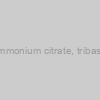 Ammonium citrate, tribasic |
|
AB0060 |
Bio Basic |
250g |
EUR 72.53 |
|
|
 Ammonium Citrate Tribasic Buffer |
|
40121237-1 |
Glycomatrix |
200 mL |
EUR 72.12 |
 Ammonium Citrate Tribasic Buffer |
|
40121237-2 |
Glycomatrix |
500 mL |
EUR 134.51 |
 2-Mercaptoethanol ?For Molecular Biology |
|
MB041-100ML |
EWC Diagnostics |
1 unit |
EUR 9.02 |
|
Description: 2-Mercaptoethanol ?For Molecular Biology |
 2-Mercaptoethanol ?For Molecular Biology |
|
MB041-500ML |
EWC Diagnostics |
1 unit |
EUR 26.47 |
|
Description: 2-Mercaptoethanol ?For Molecular Biology |
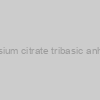 Magnesium citrate tribasic anhydrous |
|
GRM1866-2.5KG |
EWC Diagnostics |
1 unit |
EUR 81.72 |
|
Description: Magnesium citrate tribasic anhydrous |
 Magnesium citrate tribasic anhydrous |
|
GRM1866-500G |
EWC Diagnostics |
1 unit |
EUR 18.14 |
|
Description: Magnesium citrate tribasic anhydrous |
 Tris Citrate Tribasic 1M Solution |
|
40121257-1 |
Glycomatrix |
250 mL |
EUR 225.11 |
) Tris (Molecular Biology Grade) |
|
CE237 |
GeneOn |
500 g |
EUR 106.8 |
) Tris (Molecular Biology Grade) |
|
CE238 |
GeneOn |
1 kg |
EUR 153.6 |
) Tris (Molecular Biology Grade) |
|
CE239 |
GeneOn |
5 kg |
EUR 535.2 |
 Lithium Citrate Tribasic Tetrahydrate 1.5M |
|
40121159-1 |
Glycomatrix |
100 mL |
EUR 43 |
 Lithium Citrate Tribasic Tetrahydrate 1.5M |
|
40121159-2 |
Glycomatrix |
500 mL |
EUR 163.19 |
 Lithium Citrate Tribasic Tetrahydrate 1.5M |
|
40121159-3 |
Glycomatrix |
250 mL |
EUR 85.98 |
 Molecular Biology Grade Water for RT-PCR |
|
ML065-1.5ML |
EWC Diagnostics |
1 unit |
EUR 7.82 |
|
Description: Molecular Biology Grade Water for RT-PCR |
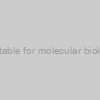 Pyridine, GlenBiol™, suitable for molecular biology with molecular sieve |
|
GS8780-2500 |
Glentham Life Sciences |
2500 |
EUR 249.8 |
|
|
) DTT (Molecular Biology Grade) |
|
CE131 |
GeneOn |
5 g |
EUR 93.6 |
) DTT (Molecular Biology Grade) |
|
CE132 |
GeneOn |
10 g |
EUR 133.2 |
) DTT (Molecular Biology Grade) |
|
CE133 |
GeneOn |
25 g |
EUR 243.6 |
) NAD (Molecular Biology Grade) |
|
CE196 |
GeneOn |
1 g |
EUR 72 |
) NAD (Molecular Biology Grade) |
|
CE197 |
GeneOn |
5 g |
EUR 165.6 |
) NBT (Molecular Biology Grade) |
|
CE209 |
GeneOn |
1 g |
EUR 123.6 |
) NBT (Molecular Biology Grade) |
|
CE210 |
GeneOn |
5 g |
EUR 360 |
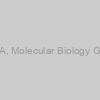 EGTA, Molecular Biology Grade |
|
40500028-2 |
Glycomatrix |
50 g |
EUR 106.43 |
 EGTA, Molecular Biology Grade |
|
40500028-3 |
Glycomatrix |
100 g |
EUR 177.58 |
 EGTA, Molecular Biology Grade |
|
40500028-4 |
Glycomatrix |
500 g |
EUR 603.19 |
 EGTA, Molecular Biology Grade |
|
40500028-5 |
Glycomatrix |
1 kg |
EUR 912.98 |
 EGTA, Molecular Biology Grade |
|
40500028-6 |
Glycomatrix |
2 kg |
EUR 1687.94 |
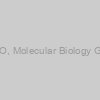 DMSO, Molecular Biology Grade |
|
40470006-1 |
Glycomatrix |
100 mL |
EUR 88.18 |
 DMSO, Molecular Biology Grade |
|
40470006-2 |
Glycomatrix |
250 mL |
EUR 150.19 |
 DMSO, Molecular Biology Grade |
|
40470006-3 |
Glycomatrix |
500 mL |
EUR 279.26 |
) BCIP (Molecular Biology Grade) |
|
CE108 |
GeneOn |
250 mg |
EUR 75.6 |
) BCIP (Molecular Biology Grade) |
|
CE109 |
GeneOn |
1 g |
EUR 108 |
) DAPI (Molecular Biology Grade) |
|
CE117 |
GeneOn |
5 mg |
EUR 72 |
) DAPI (Molecular Biology Grade) |
|
CE118 |
GeneOn |
25 mg |
EUR 159.6 |
) DAPI (Molecular Biology Grade) |
|
CE119 |
GeneOn |
100 mg |
EUR 382.8 |
) CHAPS (Molecular Biology Grade) |
|
CE114 |
GeneOn |
1 g |
EUR 66 |
) CHAPS (Molecular Biology Grade) |
|
CE115 |
GeneOn |
5 g |
EUR 157.2 |
) CHAPS (Molecular Biology Grade) |
|
CE116 |
GeneOn |
25 g |
EUR 492 |
) HEPES (Molecular Biology Grade) |
|
CE171 |
GeneOn |
100 g |
EUR 98.4 |
) HEPES (Molecular Biology Grade) |
|
CE172 |
GeneOn |
500 g |
EUR 268.8 |
) HEPES (Molecular Biology Grade) |
|
CE173 |
GeneOn |
1 kg |
EUR 424.8 |
) Water (Molecular Biology Grade) |
|
CE243 |
GeneOn |
500 ml |
EUR 62.4 |
) Water (Molecular Biology Grade) |
|
CE244 |
GeneOn |
1 l |
EUR 67.2 |
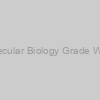 Molecular Biology Grade Water |
|
ML024-100ML |
EWC Diagnostics |
1 unit |
EUR 3.54 |
|
Description: Molecular Biology Grade Water |
 Molecular Biology Grade Water |
|
ML024-10X100ML |
EWC Diagnostics |
1 unit |
EUR 29.52 |
|
Description: Molecular Biology Grade Water |
 Molecular Biology Grade Water |
|
ML024-10X500ML |
EWC Diagnostics |
1 unit |
EUR 87.91 |
|
Description: Molecular Biology Grade Water |
 Molecular Biology Grade Water |
|
ML024-500ML |
EWC Diagnostics |
1 unit |
EUR 12.56 |
|
Description: Molecular Biology Grade Water |
 Molecular Biology Grade Water |
|
ML064-100ML |
EWC Diagnostics |
1 unit |
EUR 3.67 |
|
Description: Molecular Biology Grade Water |
 Molecular Biology Grade Water |
|
ML064-10X100ML |
EWC Diagnostics |
1 unit |
EUR 25.38 |
|
Description: Molecular Biology Grade Water |
 Molecular Biology Grade Water |
|
ML064-500ML |
EWC Diagnostics |
1 unit |
EUR 10.81 |
|
Description: Molecular Biology Grade Water |
) TritonX-100 (Molecular Biology Grade) |
|
CE240 |
GeneOn |
500 ml |
EUR 67.2 |
) TritonX-100 (Molecular Biology Grade) |
|
CE241 |
GeneOn |
1 l |
EUR 79.2 |
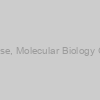 Agarose, Molecular Biology Grade |
|
40100164-1 |
Bio-WORLD |
25 g |
Ask for price |
|
|
 Agarose, Molecular Biology Grade |
|
40100164-2 |
Bio-WORLD |
50 g |
Ask for price |
|
|
 Agarose, Molecular Biology Grade |
|
40100164-3 |
Bio-WORLD |
100 g |
Ask for price |
|
|
 Agarose, Molecular Biology Grade |
|
40100164-4 |
Bio-WORLD |
500 g |
Ask for price |
|
|
 Agarose, Molecular Biology Grade |
|
40100164-5 |
Bio-WORLD |
1 kg |
Ask for price |
|
|
) Glycine (Molecular Biology Grade) |
|
CE158 |
GeneOn |
1 kg |
EUR 84 |
) Glycine (Molecular Biology Grade) |
|
CE159 |
GeneOn |
5 kg |
EUR 228 |
) Tween20 (Molecular Biology Grade) |
|
CE242 |
GeneOn |
1 l |
EUR 106.8 |
) Agarose (Molecular Biology Grade) |
|
abx299715-100g |
Abbexa |
100 µg |
Ask for price |
) Agarose (Molecular Biology Grade) |
|
abx299715-20g |
Abbexa |
20 µg |
EUR 525 |
) Agarose (Molecular Biology Grade) |
|
abx299715-50g |
Abbexa |
50 µg |
Ask for price |
) Lysozyme (Molecular Biology Grade) |
|
CE188 |
GeneOn |
1 g |
EUR 70.8 |
) Lysozyme (Molecular Biology Grade) |
|
CE189 |
GeneOn |
10 g |
EUR 247.2 |
) Lysozyme (Molecular Biology Grade) |
|
CE189L |
GeneOn |
50 g |
EUR 310 |
) Lysozyme (Molecular Biology Grade) |
|
CE189XL |
GeneOn |
250 g |
EUR 1050 |
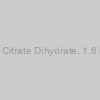 tri-Sodium Citrate Dihydrate, 1.6 M, 100 ML |
|
M-CSS-319 |
MiTeGen |
100 ml |
EUR 94 |
|
Description: tri-Sodium Citrate Dihydrate, 1.6 M, 100 ML |
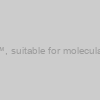 Dimethylformamide, GlenBiol™, suitable for molecular biology with molecular sieve |
|
GS3406-2500 |
Glentham Life Sciences |
2500 |
EUR 116.2 |
|
|
Our targets had been to find out: (1) spatiotemporal variation in eDNA abundance, (2) the filtrate wanted to attain robust sequencing libraries, (3) the taxonomic decision of 12S ribosomal sequences in the research surroundings, (4) the portion of the anticipated fish group detectable by 12S sequencing, (5) biases in species restoration, (6) correlations between eDNA compositions and catch per unit effort (CPUE) and (7) the extent that eDNA profiles replicate main watershed options.

